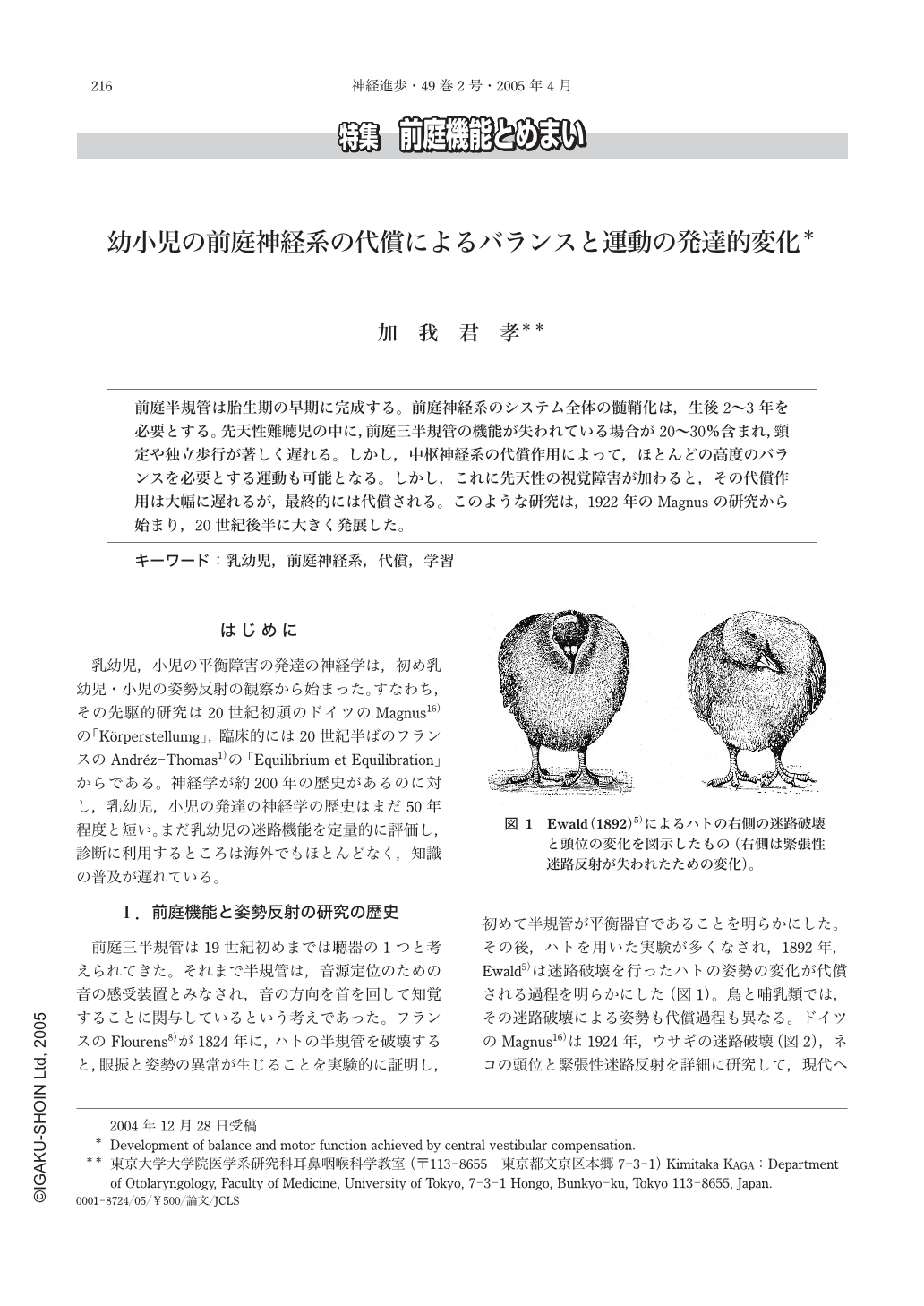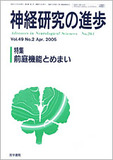Japanese
English
- 有料閲覧
- Abstract 文献概要
- 1ページ目 Look Inside
- サイト内被引用 Cited by
前庭半規管は胎生期の早期に完成する。前庭神経系のシステム全体の髄鞘化は,生後2~3年を必要とする。先天性難聴児の中に,前庭三半規管の機能が失われている場合が20~30%含まれ,頸定や独立歩行が著しく遅れる。しかし,中枢神経系の代償作用によって,ほとんどの高度のバランスを必要とする運動も可能となる。しかし,これに先天性の視覚障害が加わると,その代償作用は大幅に遅れるが,最終的には代償される。このような研究は,1922年のMagnusの研究から始まり,20世紀後半に大きく発展した。
In deaf infants and children with loss of semicircular canal function, central vestibular compensation during their development and growth was reported as well as the basic developmental neuroscience and neurology.
In order to evaluate vestibular ocular response, the earth vertical damped rotation test was performed. All cases with absence or poor per-rotatory nystagmus were chosen to study.
Development of gross motor, balance and locomotive function was seriously delayed in each case during the first 2 or 3 years of life. Thereafter, all children could achieve most landmarks of gross motor development, such as head control, independent standing, walking and running until school age. However, balance functions even at the age of entrance of the elementary school(6 years old) were variously impaired in each case and the better case could swim under water but the poor case could not maintain static balance with eyes closed. Although fine motor skills were normally achieved in all cases, these gross motor development due to central vestibular compensation could depend on the integration of inputs from the other sensory inputs such as visual, somatosensory and proprioceptive senses, and the maturation of motor control systems in the cerebellum, basal ganglia and motor cortex.
In the next, we investigated development of infants with congenital deafness and blindness in order to illuminate influence of vision on the vestibular and balance function. They revealed that opisthotonus-like retroflexion of the head has persisted until now and independent walking is not yet possible. Their vestibular evoked myogenic potentials(VEMP) were normal. The VEMP is a new neurophysiological tool in order to investigate the otolith-collic vestibular pathway.
In conclusion central vestibular compensation could play important roles to accelerate developmental motor functions of infants and children in spite of congenital or acquired loss of vestibular organs.

Copyright © 2005, Igaku-Shoin Ltd. All rights reserved.


